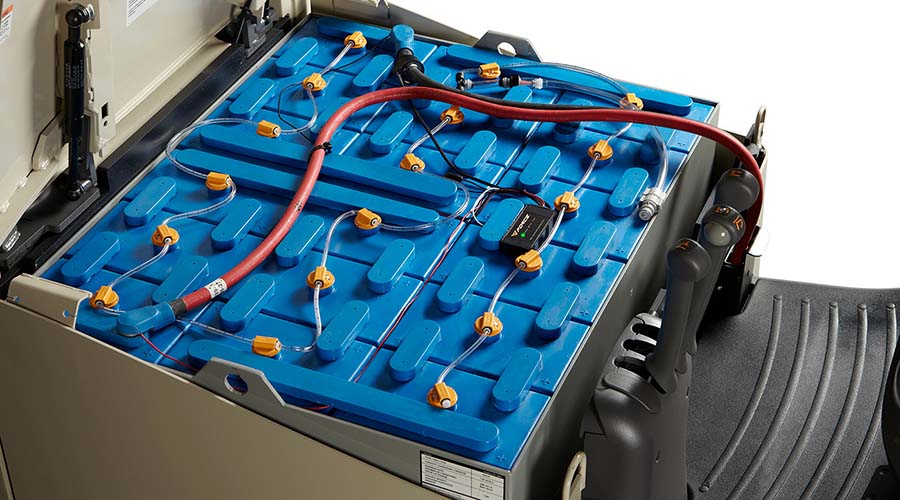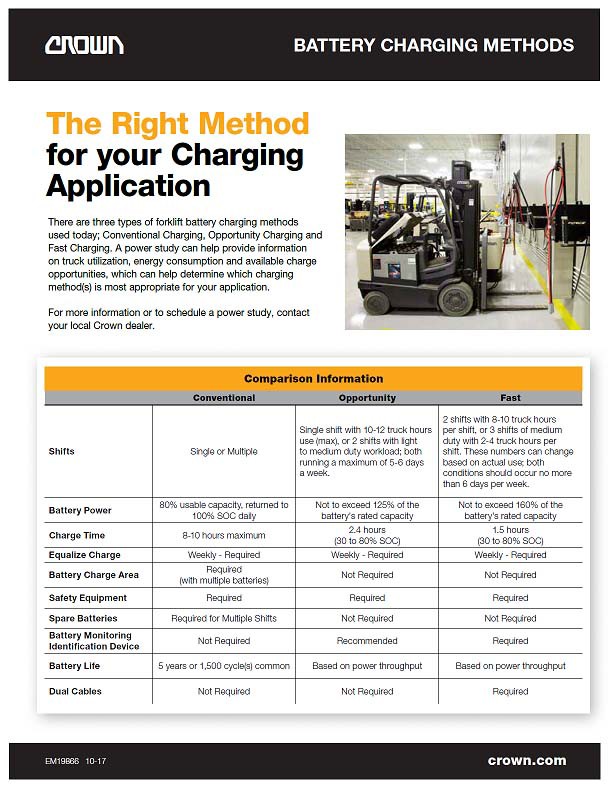Eliminate Downtime by Utilizing Fast Charging

There are three types of forklift battery charging methods used today: Conventional Charging, Opportunity Charging and Fast Charging. Choosing the right method for your application can be complicated, especially if you have a multi-shift application where it seems your forklifts are constantly on the move.
Your local Crown dealer can help by conducting a power study. This exercise can help you learn important information about forklift utilization, energy consumption and charging opportunities to help determine if one charging method, or perhaps a combination of methods, is right for you.
Those of us with computers, cell phones and maybe even electric cars might think everyone would want fast charging. When it comes to forklifts, though, fast charging is usually appropriate only under certain circumstances. Applications that run two shifts back-to-back or, perhaps three shifts with medium duty requirements can be good candidates for fast charging.
As with opportunity charging, fast charging requires charging the battery at consistent opportunities throughout the day. With this method, a start rate of 35 to 50 amps/100 amp hour is used.
Fast charging also comes with its own set of rules and requirements. Your power study can help ensure you can follow these rules. Your total battery requirement for a 24-hour period should not exceed 160 percent of the battery’s 80 percent rated capacity. You must also meet a minimum six hour cumulative charge time over each 24 hour period. You must also complete a weekly equalization charge and you must keep an eye on battery water level as increased watering will be required.
A fast-paced operation can benefit in many ways from fast charging, as it can help reduce downtime and ensure that forklifts are always available.
You can find more information about chargers that can be configured for these different battery charging methods, as well as info on watering kits to help support increased watering requirements in the Batteries and Chargers section of crown.com. Additionally, download a free copy of the Battery Charging Methods Chart and increase your awareness on how all three charging methods compare.
